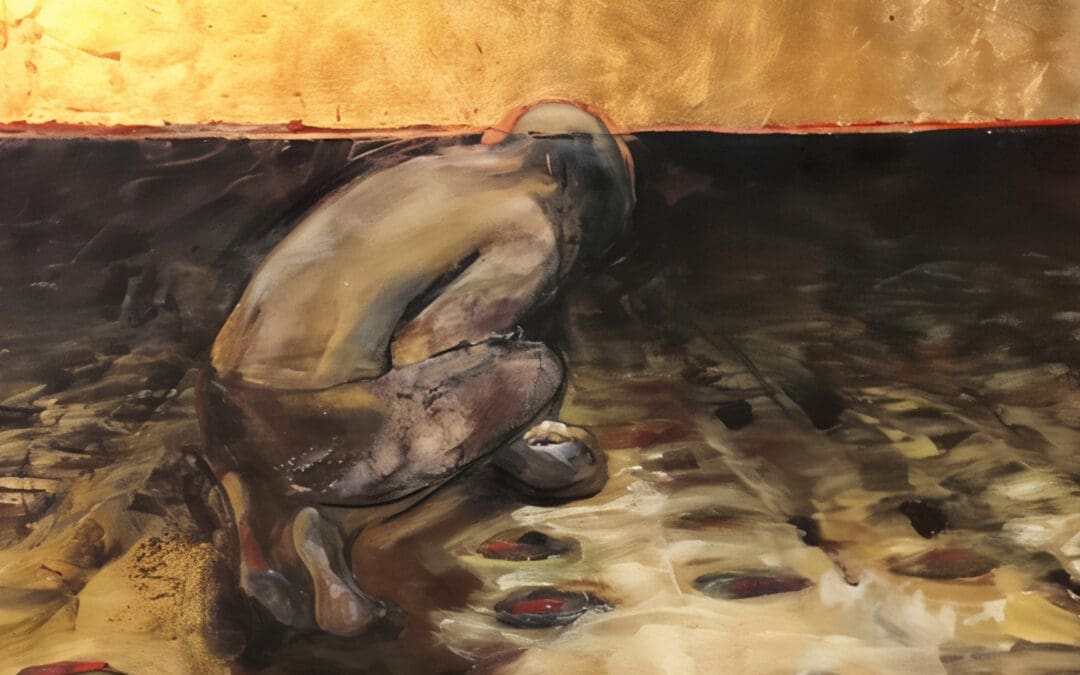L
Longing for Christ’s coming inspires the practice of lectio divina. We read, meditate, and pray in the hope that he will come and pierce our hearts. Lectio divina, therefore, is a type of advent reading.
My working assumption here is that of St. Bernard of Clairvaux. Christ, explains Bernard, comes not just on Christmas Eve (past) or on Judgment Day (future). A third advent is the “intermediate coming” of Christ today, in the conversion of our hearts. The three comings are analogous—both like and unlike one another. His past and future comings are visible. In his coming as an infant and in his coming as judge, Christ is physically present and seen by human eyes. His coming today is different. It is, observes Bernard, a hidden coming. It is this intermediate coming, invisible to the eye, that is the aim of lectio divina.
If Christ’s intermediate coming is a hidden one, how do we discern it? This dilemma has become pressing in our modern age, since philosophers such as Hobbes, Hume, and Kant have questioned our ability to move beyond the senses. If sense perception is the only means of knowledge, contemplatio of God in Christ would seem impossible.
Prayer, however, repudiates such modern restraints. The truth is, we long for advent. We pray for Christ to come. The book of experience that we read about in the monastic tradition reaches beyond the limitations of mere sense perception. Christ’s hidden coming in this third type of advent offers a way out of the modern dilemma. The reality of advent teaches us to reckon with the intermediate, hidden coming of Christ.
The reality of advent teaches us to reckon with the intermediate, hidden coming of Christ.
The spiritual masters of the lectio divina tradition, therefore, offer a way out of the modern epistemological conundrum. There is a way to turn from visible to hidden things. It is to open ourselves up to divine piercing. These spiritual masters frequently express their longing for Christ’s coming in the language of “piercing.” This theme comes to the fore especially in patristic commentaries on the Song of Songs, particularly the erotic back-and-forth between bride and groom. At one point, the bride admits to her bystanders (the “daughters of Jerusalem”) that her lover has conquered her heart: “I am wounded with love,” she exclaims (Song 2:5).
We hardly need to ask what has wounded her heart. The context makes perfectly clear that it is the groom’s love. Less obvious from the surface of the text is the lover’s means of wounding the heart of his bride. Careful reading, meditation, and prayer, however, have allowed many readers to discover the lover’s instrument of wounding. Though it isn’t mentioned in the text, readers have often identified the source of wounding as an arrow. One patristic preacher after the other expounds on the theme of archery in connection with verse 5—Cyril of Alexandria, Origen, Gregory of Nyssa, Ambrose, Augustine, Theodoret of Cyrus, Gregory the Great, and I am sure with a bit of searching I’d find more.
The spiritual masters of the lectio divina tradition offer a way out of the modern epistemological conundrum. There is a way to turn from visible to hidden things. It is to open ourselves up to divine piercing.
Let’s just trace a few examples. In the East, Gregory of Nyssa waxes eloquent about archery as he comments on the Song. The bride, he claims, “praises the accurate archer because he has directed his arrow straight at her, for she says, I have been wounded by love. By these words she signifies the arrow that lies deep in her heart.” In the West, the medieval pope Saint Gregory the Great is no different. In his Morals on the Book of Job, he asks, “What do we understand by ‘arrows’ but the words of preachers? . . . They transfix the hearts of the hearers. With these arrows Holy Church had been struck, who was saying, I am wounded with love.”
So, where is this arrow if we cannot empirically find it in the text? What gives Gregory, Augustine, and other ancient luminaries the confidence to assert that an arrow has wounded the beloved’s heart? The answer is quite simple. Lectio divina is divine or holy reading. It is animated, from start to finish, by a longing search for the presence of the heavenly Groom. The bride, intimately familiar with this Groom, knows that archery is the skill he invariably employs in piercing her heart.
Augustine’s familiarity with the Groom shows in his scouring of the Scriptures for the Groom’s wounding instrument. He links the Song’s wounding with love (Song 2:5) to Psalm 45, Scripture’s next-most-famous epithalamium after the Song of Songs. The psalmist identifies the Groom’s means of wounding his bride with the words “Thy arrows are sharp: under thee shall people fall” (Psalm 45:5). Further evidence comes from Isaiah 49:2: the Lord “hath made me as a chosen arrow: in his quiver he hath hidden me.” Theodoret directly identifies this arrow as Christ when he comments on the meaning of being wounded with love: “For [Christ] is after all the chosen arrow (Isa. 49:2) that wounds the souls it strikes.”
Advent reading is a form of reading that reaches beyond the empirical, a reading driven by a longing for Christ to pierce us with the arrows of his love.
In the New Testament, Saul’s conversion, explains Augustine, is the most obvious example of this wounding love: “From heaven the arrow was aimed, and Saul was struck in his heart. It was in Saul that it found its mark, for he was not Paul yet, but still Saul, still upright, not yet fallen flat. But the arrow struck him and he fell low in his heart.”
The logic is impeccable: if Christ is the Groom who wounds our heart, then with holy desire we search the Scriptures for how he does this. That’s what the fathers do by turning to biblical texts such as Psalm 45:5 and Isaiah 49:2. The practice of lectio divina turns readers into “living concordances.” Intimate familiarity with the Scriptures enables us to identify the Groom’s instrument for wounding his beloved’s heart. Archery is his means: biblical words turn into the Spirit’s arrow, and it is meditation on these words that gives the Logos entry in the human heart.
Scholars talk about “intertextuality” or “verbal association” to explain what’s happening here. I won’t object. But really, we should call it advent reading. It is a form of reading that reaches beyond the empirical, a reading driven by a longing for Christ to pierce us with the arrows of his love. Lectio divina, animated by desire, recognizes the Archer in the painful piercing of the heart.
Lectio divina is grounded in an advent posture. The most important things are not the ones we see. Meditation on a word (“arrow”) that is absent from the text yields a reality that is hidden from the eye (Christ’s piercing of the heart). We need divine reading, for it opens up the heart to the arrow’s wounding love.
Adapted from Pierced by Love: Divine Reading with the Christian Tradition, forthcoming from Lexham Press in 2023. Used by permission.





